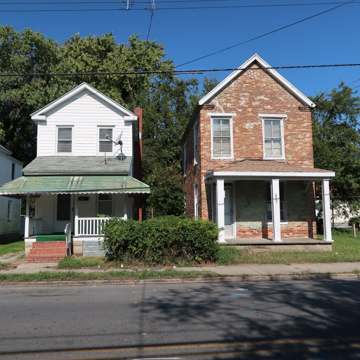This is the largest and most cohesive African American residential neighborhood on the Eastern Shore, much of which was built as prototypical worker housing for local seafood packing companies. The community was established by free Blacks in the 1820s, centered around the newly established Waugh Chapel United Methodist Church, forming the oldest African American congregation in Cambridge. The region’s large free Black population is attributed to the early shift from slave-based tobacco to less labor-intensive grain production and the impact of local abolitionist Quakers and Methodists, causing the population to rise from 77 in 1755 to nearly 3,000 by 1820. However, the extant buildings largely reflect post-Civil War Black migration, driven by jobs with the newly developed Dorchester and Delaware Railroad and the oyster- and fruit-packing industries.
The houses are mostly frame, two-story, two-bay, gable-front buildings with porches, exemplified by 605–745 Washington Street. Also appearing are four-bay, gable-front semidetached units with porches, seen together with single units at 700–728 High Street (south side). Similar owner-built examples are distinguished from company-built houses by their larger size and more ornate features, such as 518 Pine Street (c. 1900) with its original bracketed porch and entrance with transom and sidelights, merchant Daniel O. Seward’s brick house (c. 1890; 635 High Street), and local butcher Cyrus St. Clair Jr.’s eclectic house (c. 1888; 423 High). Black-owned businesses included J. F. Henry’s house and store (c. 1890; 518 Muir Street) and the mansard-roofed Hayes Drug store (c. 1880; 622 Pine). The Waugh Chapel United Methodist (rebuilt 2008; 425 High) and Bethel African Methodist Episcopal (1879, 1903; 623 Pine) churches reflect the influence of the Methodists and form anchors for the community.


